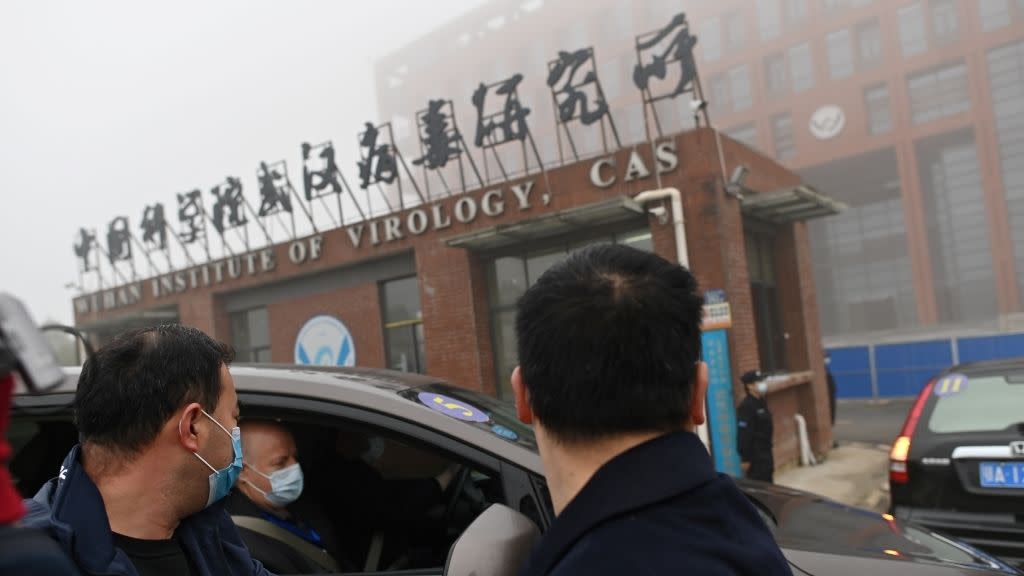Declassified US intelligence report finds no evidence of coronavirus 'lab leak' from Wuhan institute

A newly declassified U.S. intelligence report states that there's no evidence linking the start of the COVID-19 pandemic to research or biosafety incidents at the Wuhan Institute of Virology, an institute located near the site of the first reported outbreak of the novel coronavirus.
The new report, publicly released on Friday (June 23) evening, comes from the office of Avril Haines, the Director of National Intelligence. The 10-page document summarizes the U.S. intelligence community's understanding of the research capabilities and actions of the Wuhan Institute of Virology (WIV) leading up to and in the early days of the COVID-19 pandemic.
"This report does not address the merits of the two most likely pandemic origins hypotheses" — that SARS-CoV-2, the virus that causes COVID-19, spilled over from animals to humans or that the virus "leaked" from a laboratory, the document reads. However, the report does throw water on the notion that actions taken by WIV researchers somehow sparked the coronavirus pandemic.
Prior to the pandemic, WIV researchers did work with coronaviruses but none that could plausibly be precursors to SARS-CoV-2, the report states. The same goes for researchers associated with China's People's Liberation Army, who sometimes use WIV facilities for virology and vaccine-related work and have collaborated with WIV staff on public health initiatives of this nature.
Related: China must share data on COVID-19's origins 'immediately,' WHO scientist demands
WIV's research on coronaviruses involved genetic analyses and sampling viruses from animals, such as bats. But again, there's "no indication" that the institute possessed any samples of SARS-CoV-2 or a potential precursor prior to the pandemic.
"Information available to the IC [intelligence community] indicates that the WIV first possessed SARS-CoV-2 in late December 2019, when WIV researchers isolated and identified the virus from samples from patients diagnosed with pneumonia of unknown causes," the report states.
There is also no "direct evidence" that a research-related incident involving WIV personnel occurred before the pandemic and could have sparked the global outbreak, the report notes. That said, WIV personnel "probably did not use adequate biosafety precautions at least some of the time" prior to the pandemic, and the lab had been working to improve some of its biosafety measures, equipment and training practices prior to the outbreak's start.
As part of their research, WIV staff have genetically engineered coronaviruses using "common laboratory practices," but there's no indication that the institute has done such research with SARS-CoV-2, a closely related precursor, or a "backbone" virus that is closely related enough to SARS-CoV-2 to have been the source of the pandemic.
RELATED STORIES
—Do other viruses have as many variants as SARS-CoV-2?
—Viruses found in Laos bats are closest known relatives to SARS-CoV-2
—Why COVID-19 spreads more easily than SARS
In addition to probing the research conducted at WIV, the report focused on several cases of mild illness among WIV researchers that occurred in fall 2019. These illnesses involved some symptoms consistent with COVID-19 and some unrelated symptoms. The intelligence community has concluded that the employees' illnesses neither support nor refute either of the pandemic origin hypotheses, in part, because the reported symptoms may have resulted from other conditions, such as allergies or the common cold.
At this time, U.S. intelligence agencies are split as to whether they favor the spillover or lab leak hypothesis, but five have concluded that the former scenario is the most likely, the report notes. Two agencies — the Department of Energy and the Federal Bureau of Investigation — have supported the lab leak theory, while two more have said they're unable to determine the precise origin of the pandemic.
Still, "all agencies continue to assess that both a natural and laboratory-associated origin remain plausible hypotheses to explain the first human infection." But crucially, all agencies have concluded that SARS-CoV-2 was not developed as a biological weapon, the report notes.

